Recent Articles
Popular Makes
Body Types
2019 McLaren 720 S Spider Road Test and Review
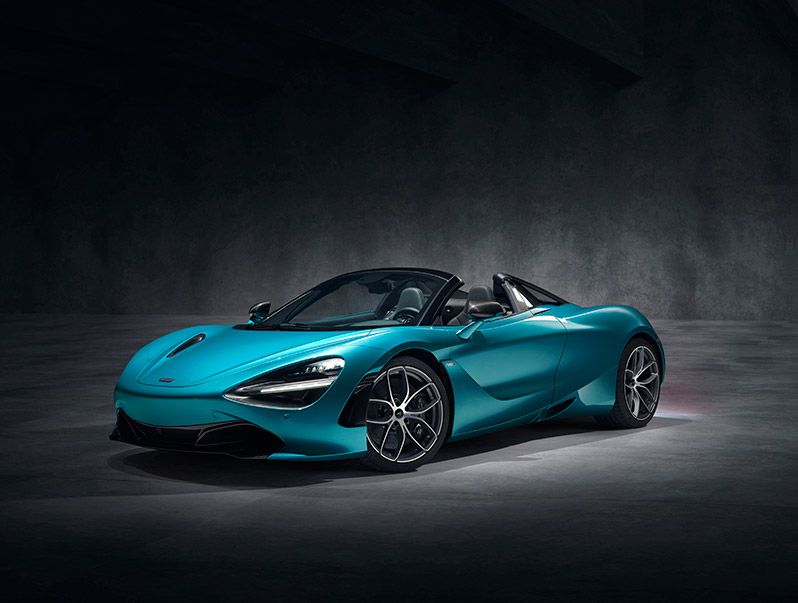
McLaren 720S spider front three quarter ・ Photo by McLaren
The 2019 McLaren 720S Spider is the latest supercar to come out of the fabled British automaker. The company built its reputation on the race track. Founded by Bruce McLaren in 1966, McLaren vehicles have competed and won in Formula 1, IndyCar, Can-Am, Grand Prix, and other major series, with such legendary names as Nikki Lauda, Emerson Fittipaldi, James Hunt, and Lewis Hamilton behind the wheel.
The 1993 McLaren F1 was the company’s first road car. Pristine examples of the F1 are currently valued at $15 million and up when they come to auction. The current lineup of McLaren road cars includes the GT, Sport Series, Super Series, and Ultimate Series vehicles. The 720S Spider is in the Super Series, along with the 720S Coupe. The opportunity to spend a few days with this supercar, interspersed with our usual diet of economy cars and SUVs, was a delicious treat to be savored. Here's what we learned.
What is it?
The McLaren 720S Spider is a mid-engine/rear-wheel drive, two-seat supercar with a retractable hardtop. While it has the power, handling, and capability to perform on a racetrack, it is also engineered and designed to be driven on public roads with ease.
Like all current McLaren vehicles, the 720S is built around a carbon-fiber monocoque, an extremely rigid tub structure that forms the skeleton upon which the engine, drivetrain, suspension, and body components hang. The 720S also uses carbon fiber for its roof pillars and upper structure. The 720S Spider has a curb weight of 3,247 lbs (108 lbs more than the 720S Coupe) with a weight distribution of 42 percent front/58 percent rear.
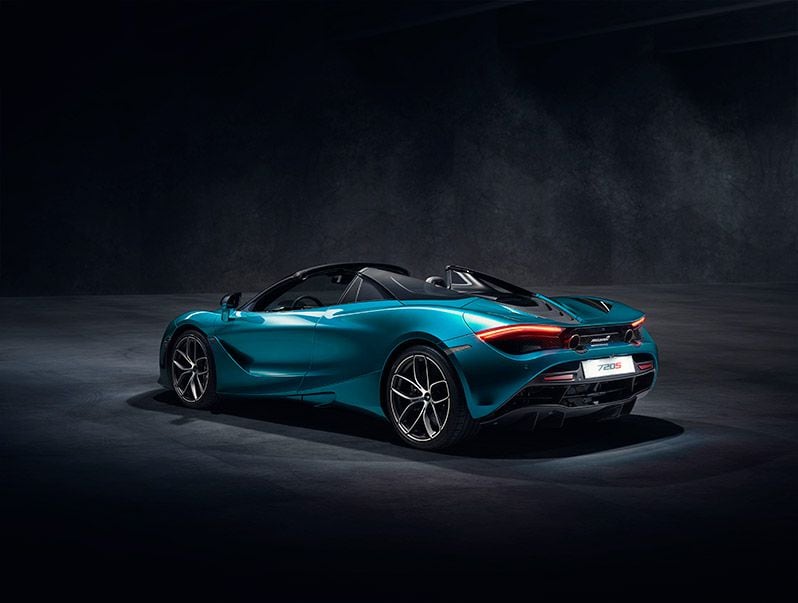
Photo by McLaren
Exterior Design
McLaren describes the 720S side openings as “Dihedral Doors.” Hinged at the front, they swing up and forward to leave a generous aperture for entry to the vehicle, requiring no contortions, even with the solid roof in place.
The 720S is 85 inches wide at its widest point, and just 110 inches wide with the doors open — which means that it will fit in most standard parking spaces. The roof is at 47 inches, and the doors open up to a height of 77 inches. Every exterior detail is crafted to slice through the air, and to move air efficiently through the body for engine and brake cooling as well as aerodynamics and stability. A modest rear wing extends from the body automatically in certain driving conditions to add downforce. Top up or down, the 720S is a gorgeous, swoopy work of art, worthy of hours of contemplation.
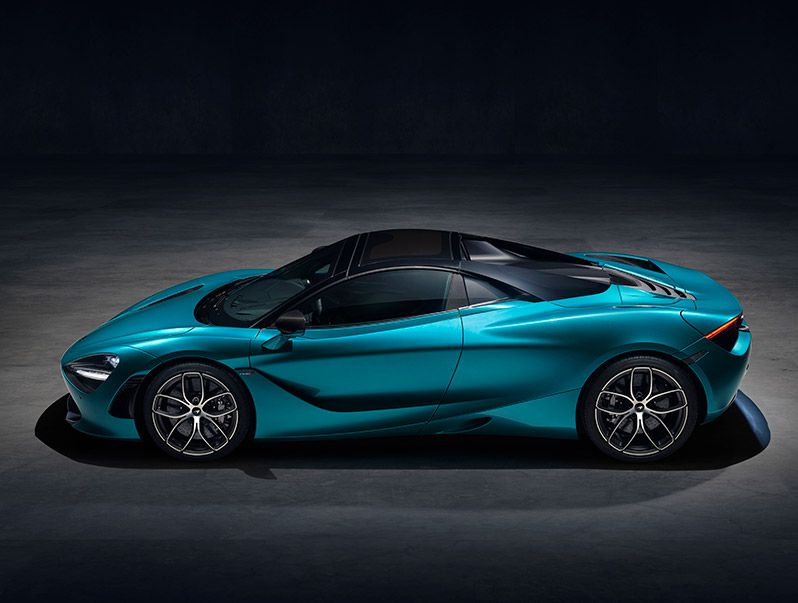
Photo by McLaren
Interior Design
The 720S interior is a luxurious, comfortable place to spend time for both driver and passenger. Even inside the cabin, the design is purposeful, in service of performance. The 8-inch central touchscreen monitor is mounted in portrait orientation, allowing for a narrower center stack and center console. This helps to centralize mass in the cabin, which contributes to the car’s handling.
The supportive bucket seats are very comfortable and well-bolstered, while still generous enough for American proportions. The beefy flat-bottomed steering wheel adjusts for tilt and reach, and bucks the trend of being covered with too many buttons and toggles. In a similar nod to driver focus, the full display instrument panel can be transformed to a slim, elemental panel at the push of a button, leaving a slim screen with essential information and a minimum of distraction.
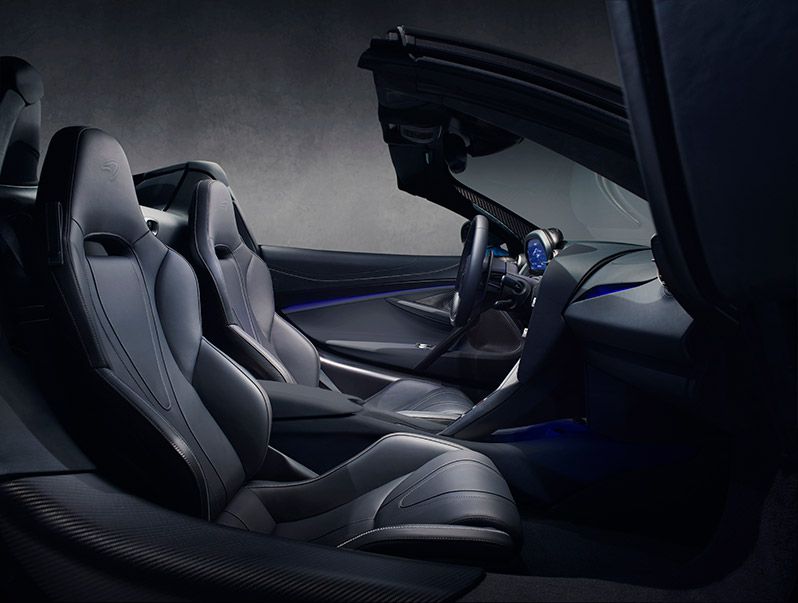
Photo by McLaren
Infotainment
Even a supercar driver sometimes needs directions. The 720S’s center console touchscreen provides access to a fully-featured infotainment system with embedded navigation and telematics.
An optional Bowers & Wilkins 12-speaker surround-sound system is available for those lazy cruises and low-speed commutes — though at higher speeds and during intensive driving, the music of the engine overwhelms the audio. Amenities like Bluetooth hands-free and audio streaming are standard, but there’s no Apple CarPlay or Android Auto onboard.

Photo by McLaren
Powertrain
As befits a supercar, the McLaren 720S Spider gets a glorious, lusty engine. Mounted midship is a 4.0-liter V8 gasoline engine arranged in a 90-degree V formation. Twin electrically actuated twin-scroll turbochargers, 32 valves with variable timing, and a double overhead cam conspire to bring output to 710 hp and 568 lb-ft of torque.
A seven-speed automatic Seamless Shift Gearbox sends the power to the rear wheels, with manual clutchless shifting available via column-mounted shift paddles. Maximum revolution speed for the engine is 8,500 rpm, and peak horsepower arrives at 7,500 rpm, peak torque at 5,500 rpm — giving an incentive to let the revs rise for a rush of acceleration and an intoxicating exhaust note. The quick-shifting transmission is perfectly matched with the engine, and there’s never a hint of turbo lag — just seamless, urgent acceleration.
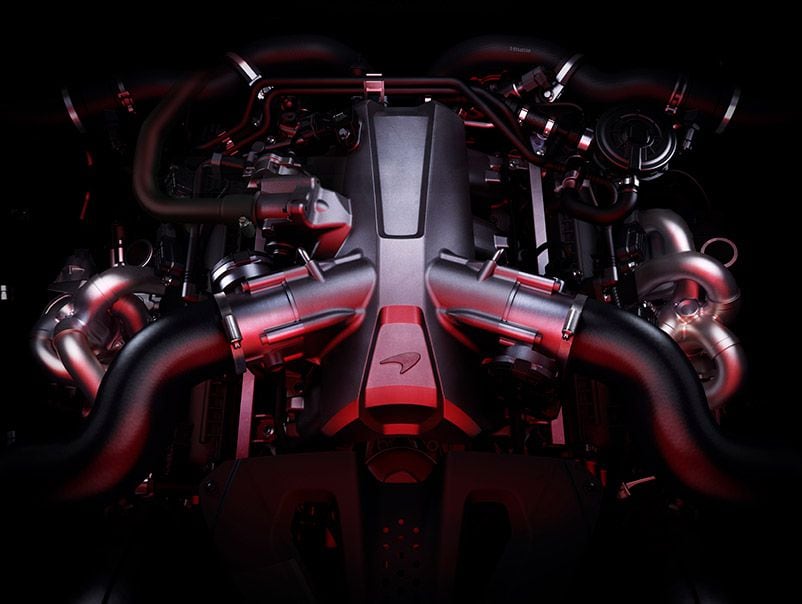
Photo by McLaren
Suspension, Steering, and Drive Modes
If supercar owners can be pinned down for one honest complaint, they’ll often admit that ride comfort can be an issue. The same settings that make a car a monster on the track can make it a beast to live with on the less perfect roads in the real world. The McLaren 720S addresses this issue with a sophisticated double-wishbone suspension with adaptive dampers and Proactive Chassis Control II.
Two dials on the dashboard allow the driver to select and customize suspension and drive mode settings from Comfort to Sport to Track, matching suspension stiffness, throttle performance, steering sensitivity, transmission profiles and traction control settings to conditions and preferences. The system is dynamic and has a bit of a learning curve, but it rewards drivers with the ride that they want, when they want it. Few supercars are as compliant and comfortable on a daily drive.
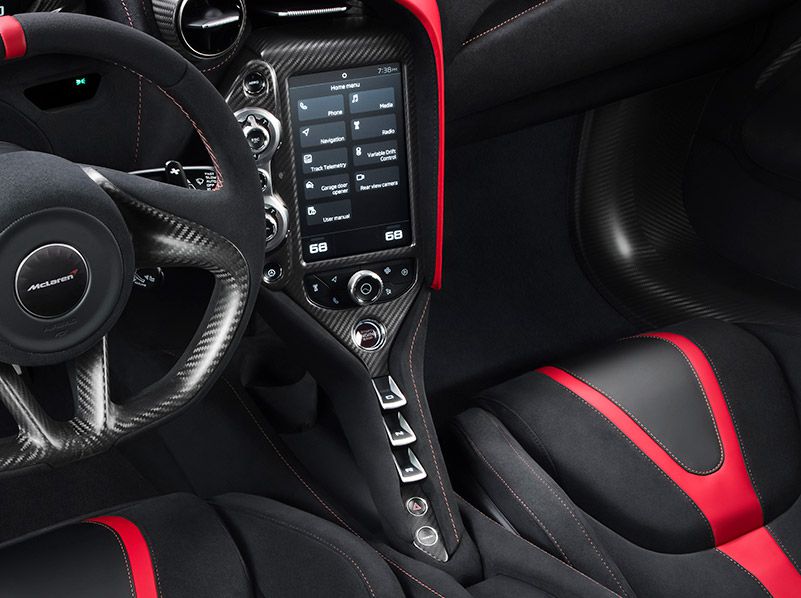
Photo by McLaren
Safety
Beyond its stiffness and light weight, the 720S’s carbon fiber construction yields multiple safety benefits. Immediately noticeable, the thin A-pillars that support the roof allow for great outward visibility, as do the big side windows and generous rear window. With the top down, visibility is even better.
The carbon-fiber monocoque is also renowned for crash-worthiness, as the passenger compartment is a rigid protective cage for its occupants. Airbags, antilock braking, traction control, and electronic stability control are all standard as well. Standard LED headlamps, taillamps, and daytime running lights help to give the sleek, low supercar presence after dark.
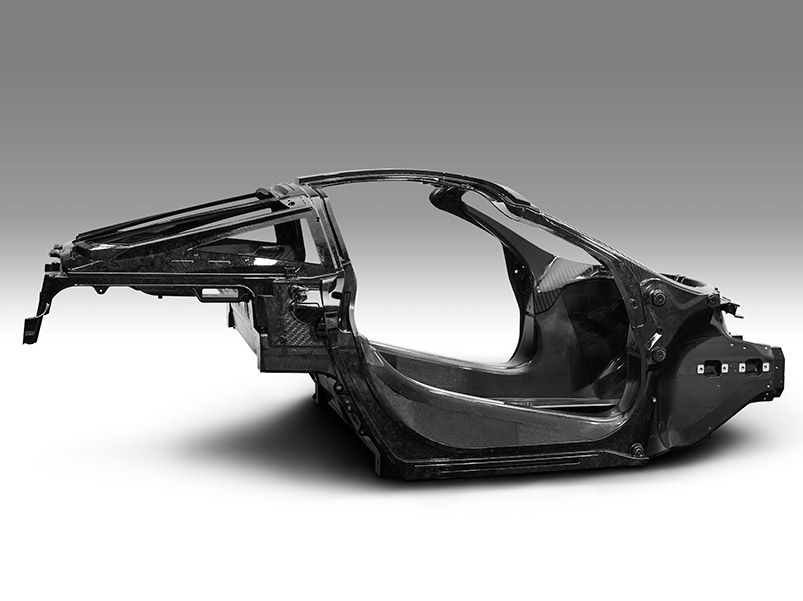
Photo by McLaren
On the Road
Finally, a chance to talk about what it’s like to drive the McLaren 720S Spider. Our test drives took place in southeastern Michigan in the late spring, not a place known for its great roads or drive routes. Still, every moment in the 720S provided excitement and thrills.
First, some figures. Zero to 60 mph is rated at 2.8 seconds on the way to a 10.4-second quarter-mile and a top speed of 212 mph. Not that we even dreamed of going that fast. But even on public roads at legal speeds, there were opportunities to explore the McLaren’s seemingly limitless grip, razor-sharp steering, and absolute stability at speed. Cruising along the freeway with the top down on a sunny day surrounded by a perfectly arrayed cabin, the sense of automotive excellence permeates every mile traveled. Comfort, capability, beauty, and precision can be enjoyed at any speed.
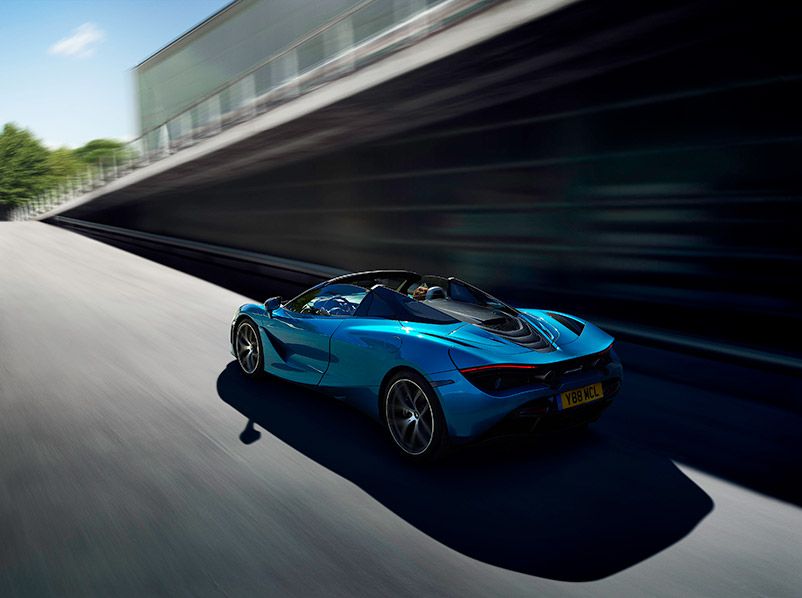
Photo by McLaren
Models, Trim Levels, Pricing, and Packages
The 2019 McLaren 720S Spider comes in three trim levels: 720S (starting at $315,00); 720S Luxury (starting at $327,130); and 720S Performance ($327,130). Our test vehicle was a 720S Spider Luxury with an approximate as-tested price of $411,300, including a host of options.
Here's the full list of options on our test car: Belize Blue paint, 10-spoke lightweight forged wheels, special-color polished brake calipers, two exterior carbon fiber packs, a visible carbon fiber monocage, twin exit stainless steel sports exhaust, gloss finish visual carbon fiber diffuser and front air intakes, a glazed electrochromatic retractable hardtop roof, carbon fiber primary and secondary interior components, carbon fiber seatbacks, a power-adjustable steering column, a Bowers & Wilkins 12-speaker audio system, McLaren Track Telemetry, a carbon fiber rear deck, and carbon fiber shift paddles. In other words, it was loaded.
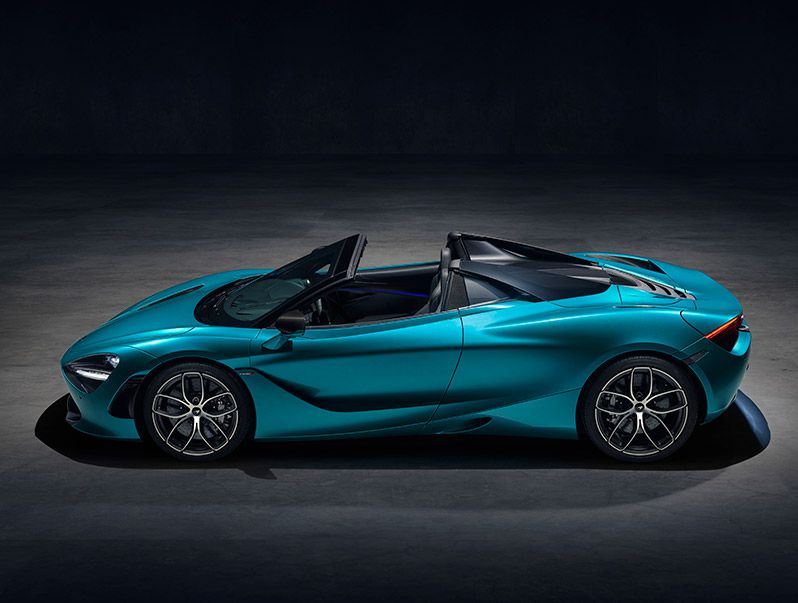
Photo by McLaren
Final Thoughts
It’s easy to reduce a supercar to a specification chart, but that doesn’t do it justice. The 2019 McLaren 720S Spider is an experience, a rare expression of the very height of automotive excellence and achievement.
It will inevitably be compared to vehicles like the Ferrari 488 Pista, Porsche 911 GT2 RS, and Lamborghini Aventador SVJ Roadster, as well it should be. There are no definitive answers in this elevated company, only decisions based on taste and compatibility. For drivers who are seeking a supercar that they’ll enjoy driving in almost any circumstance — on the track, back and forth to the office, or on long weekend excursions with a significant other — the 720S Spider is a rewarding supercar that will be a joy to live with.
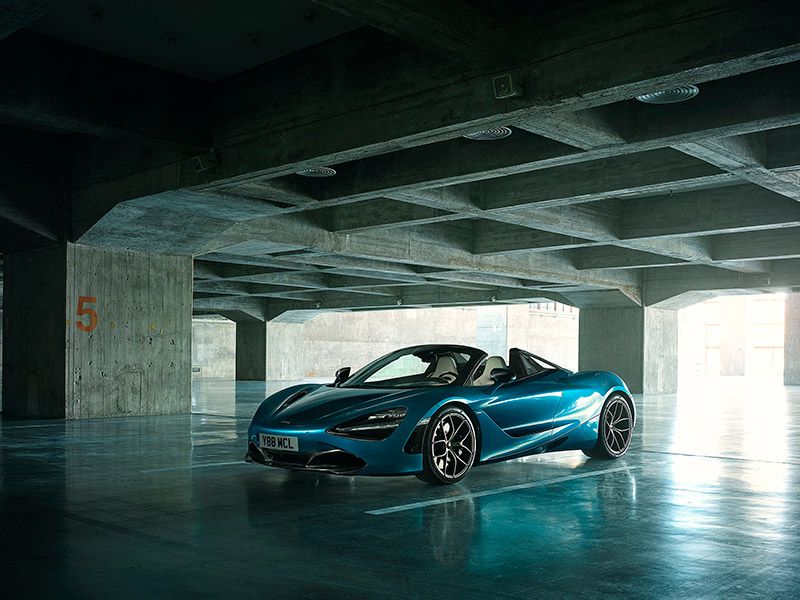
Photo by McLaren